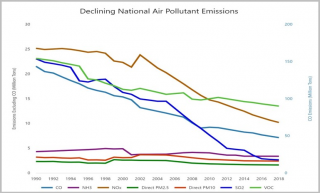Overview of the Clean Air Act and Air Pollution
The Act calls for states and EPA to solve multiple air pollution problems through programs based on the latest science and technology information.
-
Requirements and History
Congress designed the Clean Air Act to combat a variety of air pollution problems, and to tackle emerging pollution threats.
-
Role of State, Local, Tribal and Federal Governments
The Clean Air Act calls for state, local, tribal and federal governments to work in partnership to clean the air.
-
Flexibility and Accountability
Under the Act, EPA seeks to provide industry with flexibility on ways to control emissions while maintaining accountability for achieving reductions.
-
Role of Science and Technology
Under the Clean Air Act, health-based air quality standards are based on the latest science. Emissions standards for sources are based on information about available technologies.
-
Public Participation
Stakeholders and the public play critical roles in developing standards and implementation of the Clean Air Act.
-
Clean Air and the Economy
Over 40 years of experience with the Clean Air Act shows that clean air and a healthy economy can go hand in hand.

